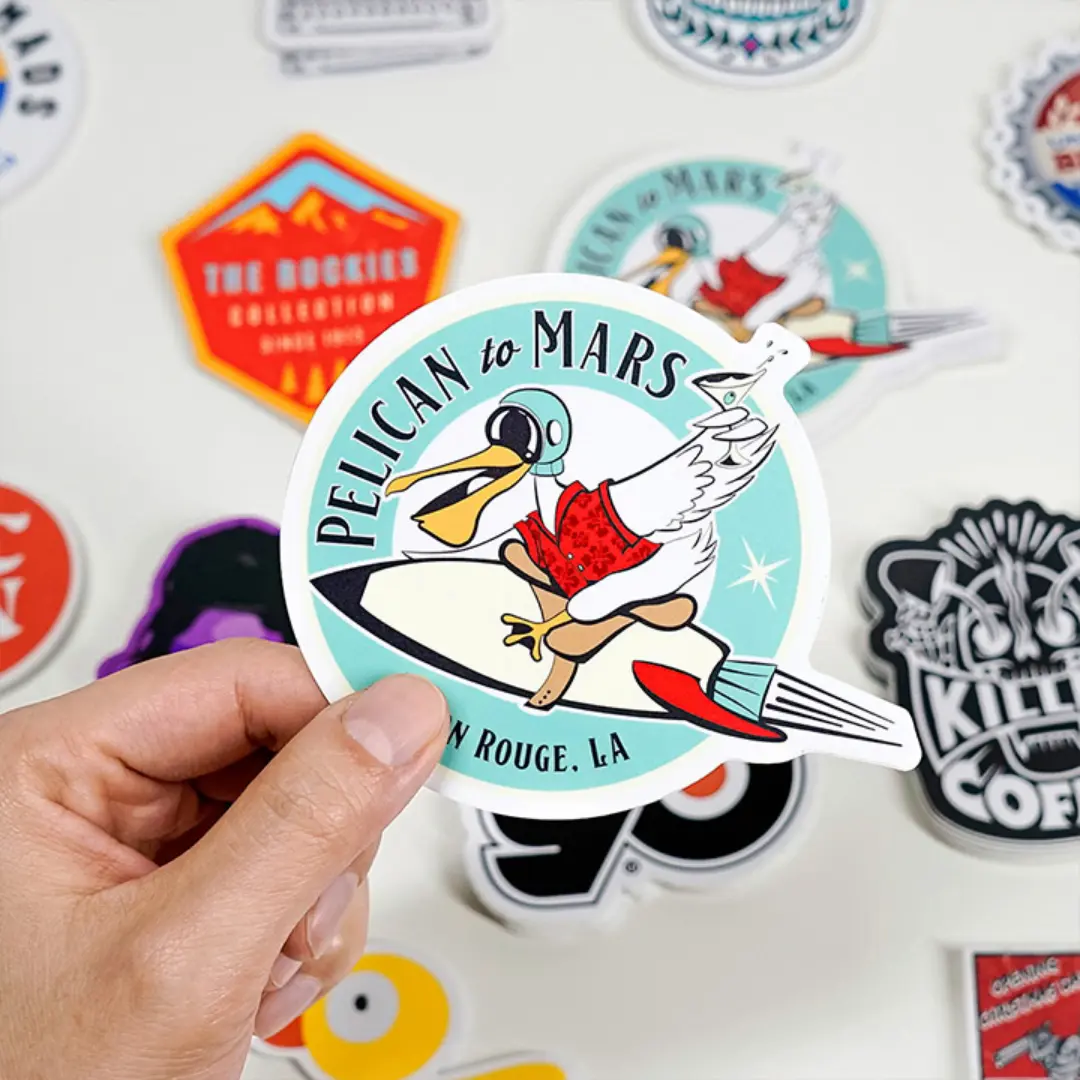VINYL STICKERS
Vinyl stickers have become an essential tool for individuals and businesses alike, providing a practical and aesthetically pleasing way to convey messages, enhance branding, and add personal touches to various items. Their popularity stems from their durability, versatility, and the endless customization options available. This comprehensive guide explores the benefits, applications, and creation process of vinyl stickers, highlighting why they are a preferred choice for many.
Vinyl stickers are adhesive decals made from polyvinyl chloride (PVC), a type of plastic known for its robustness and flexibility. These stickers are designed to adhere to various surfaces, including metal, glass, plastic, and wood. They are available in numerous finishes, such as glossy, matte, and transparent, allowing for a wide range of creative applications. Benefits of Vinyl Stickers
- Durability: One of the most significant advantages of vinyl stickers is their durability. They are resistant to water, sunlight, and harsh weather conditions, making them suitable for both indoor and outdoor use. This resistance ensures that the stickers maintain their color and integrity over time.
- Versatility: Vinyl stickers can be used for multiple purposes, from business branding to personal decoration. Their adaptability makes them a popular choice for various industries, including retail, automotive, and home decor.
- Easy Application and Removal: Applying vinyl stickers is a straightforward process that doesn't require professional assistance. They can be easily removed without leaving sticky residue, making them perfect for temporary or changing displays.
- Customization: The ability to customize vinyl stickers is one of their most appealing features. Whether you need a specific shape, size, or design, vinyl stickers can be tailored to meet your exact requirements. This level of customization is ideal for businesses looking to create unique promotional materials or individuals seeking personalized decorations.
- Business and Branding: Vinyl stickers are an effective marketing tool for businesses. They can be used for logo displays, promotional giveaways, product labels, and storefront decorations. Their eye-catching designs help attract customers and reinforce brand identity.
- Vehicle Decals: Many businesses use vinyl stickers for vehicle advertising. These decals can turn company cars, trucks, or vans into mobile billboards, reaching a broader audience while on the move. Additionally, personal vehicle owners often use vinyl stickers for customization and aesthetic enhancement.
- Home and Office Decor: Vinyl stickers are a popular choice for home and office decoration. Wall decals, window stickers, and custom labels can transform a space, adding personality and style. They are also useful for organizing and labeling items in an office setting.
- Event and Promotional Use: Events such as trade shows, conferences, and festivals benefit from the use of vinyl stickers. They can be handed out as promotional items, used for signage, or incorporated into event branding. Their cost-effectiveness makes them an excellent choice for large-scale distribution.
- Hobby and Craft Projects: Vinyl stickers are widely used in hobby and craft projects. Crafters appreciate their ease of use and the professional finish they provide. They are often used for scrapbooking, custom gifts, and DIY home decor.
- Design: The first step is creating a design. This can be done using graphic design software such as Adobe Illustrator or Photoshop. The design should be high-resolution to ensure clarity and detail in the final sticker. Consider the purpose and audience of the sticker when designing to make sure it effectively conveys the intended message.
- Material Selection: Choosing the right vinyl material is crucial. There are different types of vinyl, including cast and calendered vinyl. Cast vinyl is more durable and suitable for long-term use, while calendered vinyl is more affordable and suitable for short to medium-term applications.
- Cutting: Once the design is ready, it is cut out of the vinyl material using a plotter or cutting machine. These machines use precise blades to cut the vinyl into the desired shapes and sizes. The cutting process can create intricate designs with fine details.
- Weeding: Weeding involves removing the excess vinyl from around the design. This step requires patience and precision, especially for intricate designs. Special tools are available to assist with this process, making it easier to remove small pieces of vinyl.
- Application Tape: After weeding, application tape is applied to the top of the vinyl sticker. This tape helps transfer the sticker from its backing to the desired surface. It ensures that the design remains intact during the application process.
- Application: To apply the sticker, clean the target surface to ensure it is free of dust and debris. Position the sticker and use a squeegee or similar tool to press it firmly onto the surface, eliminating air bubbles. Carefully peel off the application tape, leaving the vinyl sticker in place.
Frequently Asked Questions.
No FAQs to show.







